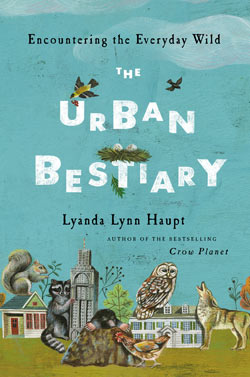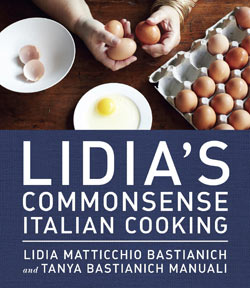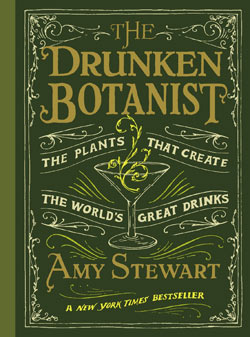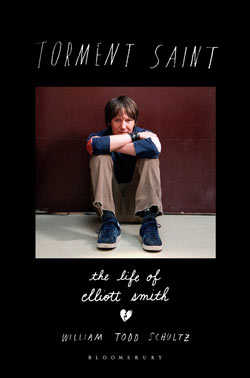
Winter would be lost without a new stack of books to enjoy while wrapped up in a blanket, and you can always feel good about sending one more book into the world. This year we bring a little less fiction and a little more of the rest of the written word. So bring on the frightful weather, and help your giftees enjoy it.
Tenth of December By George Saunders. Random House, $26. Short stories.
Once again, Saunders dives into the haunting world of drugs, assault, poverty and life’s gloomiest scenarios in each short story from his latest collection, Tenth of December. Each story starts with a world of well-planned details that are brought together artfully by the end, leaving you with a peculiar feeling that makes you want to meet the characters in the coming story. He’s mastered language, as the trail of thoughts throughout his stories realistically matches the internal dialogue of his pensive characters.
The value in this collection is seeing how Saunders weaves each piece together, noticing how so many dark stories bring a certain lightness to life and existence. While it’s not the book to hand to everyone on your gift list, Saunders’ collection is worth passing to the right people. It’s a great discussion starter for the intellectual on your list or the edgy new literature your hip relative is waiting to explore. — Carolina Reid

The Cats of Tanglewood Forest By Charles de Lint. Hardcover; Little, Brown Books for Young Readers (age 8 to 12), $15. Children’s.
This book is an expansion of Charles de Lint’s 2003 picture book A Circle of Cats. In this captivating story, Lillian Kindred is a lovable orphan being raised by her aunt on a farm at the edge of a forest. Lillian feels safe in the forest, but one day she explores a little too far and is lost. While resting, Lillian is bitten by a venomous snake. But before her conscience fades, her magical cat friends save her from death by turning her into a kitten.
Lillian really prefers to be a girl, so she has to strike out on her own to figure out how to regain her human form. Throughout her journey she has to seek help from and make deals with the other magical animals she encounters.
Old Mother Possum brings some upsetting news. T. H. Reynolds, the fox, unapologetically informs Lillian that he’s eaten Mother Possum’s husband, saying, “I’m a fox. It’s what we do.” Despite the fox’s sly nature, he becomes a trustworthy ally. The story is really about Lillian, not the cats, and the choices she must make. Throughout her journey, she learns that each choice has a consequence, and it’s not always what she expected. — Vanessa Salvia

The Urban Bestiary: Encountering the Everyday Wild By Lyanda Lynn Haupt. Hardcover; Little, Brown and Company, $20. Nonfiction.
Lyanda Lynn Haupt writes with a keen sense of detail and unabashed delight in nature. This book delves into unusual, fascinating facts about species that are common in urban places. Mammals and birds that share the urban environment along with us are introduced through engaging sketches about their habitat, habits, preferences and personalities that are normally hidden to us. For instance, pigeons are capable of learning abstract mathematical concepts, opossums rank higher than domestic dogs on performing certain tasks and there’s a reason why moles are not likely to be eaten by other animals.
The book is divided into four parts: an introduction, which includes a chapter on urban tracking, “The Furred,” (coyote, mole, raccoon, squirrel, rat, black bear and cougar), “The Feathered,” (50 different birds, from bald eagle to chicken) and “The Branching and The Rooted,” which includes tree and human.
Even common creatures like squirrels or pigeons will become more like old friends after Haupt’s thoughtful narrative and explanations of natural history. A perfect read for any animal lover — whether country or city dweller — who wants a richer appreciation and understanding of the natural world that’s all around them. — Vanessa Salvia

Lidia’s Commonsense Italian Cooking: 150 Delicious and Simple Recipes Anyone Can Master By Lidia Matticchio Bastianich and Tanya Bastianich Manuali. Hardcover; Knopf, $25. Nonfiction.
If Lidia Matticchio Bastianich says that anyone can master these recipes, then it’s true. Her recipes are easy, delicious and well-tested. They are not at all fussy foods, but simple and flavorful Italian dishes that are suitable for everyday meals or gracious entertaining.
Bastianich has risen to fame in the cooking world through her public television program “Lidia’s Italy” and her NYC restaurant, Felidia. Her children have also forayed into the wine and food world. Rather than a flashy celebrity chef, Bastianich is the friendly, neighborhood Nonna who helps you get the best texture from your fresh pasta dough and the most flavor from your marinara.
Channeling the instructiveness from her TV shows and the warmth of a family matriarch, Bastianich honors her mother and grandmother with stories who taught her how to cook, and the importance of bringing everyone to the table together to share homemade food. Her recipe for appetizer mozzarella and celery salad has only seven ingredients that are in nearly everyone’s pantry. Potatoes baked in beer or “Pasta and Bean Soup When In a Hurry” are simple and satisfying, and her notes allow the cook to follow the recipe or experiment with a different ingredient or seasoning if they’re feeling adventurous. — Vanessa Salvia

The Drunken Botanist: The Plants That Create the World’s Great Drinks By Amy Stewart. Hardcover; Algonquin Books, $15. Nonfiction.
This is a perfect gift book for people who like to both eat and drink. Amy Stewart explores the herbs, flowers, trees, fruits and fungus that humans have managed to turn into alcohol.
Gin may be nothing more than flavored vodka, but the stories behind the many herbs that go into making it taste so bracing are fascinating. Each leaf, seed and root has its own political and cultural history, its own traditions and its own methods of preparation.
Stewart’s tome is much more than a reference book. She packs in facts worthy of any cocktail party conversation. It’s well written, fun to read and includes recipes and growing instructions, in case you want to try your hand at producing your own fresh ingredients for the most ginny gin. Your grateful reader will no doubt learn about a new alcohol that they previously had no idea existed, along with some fun science trivia. For instance, the DNA of apples is more complex than ours — the Golden Delicious apple genome contains more than twice as many genes as that of humans. You don’t have to be a chemist or botanist to enjoy this book, just curious. — Vanessa Salvia
Anything That Moves: Renegade Chefs, Fearless Eaters, and the Making of a New American Food By Dana Goodyear. Riverhead Hardcover, $20. Nonfiction.
We have no problem with eating caviar, but eating ant eggs is still considered taboo in our country. Well, among the foodies in this book, nothing is off limits, not even the ox penis. New Yorker writer Dana Goodyear looks at the fringes of extreme eating, which are so far beyond nose-to-tail at this point.
The new American cuisine, which Goodyear calls a “convergence of the disgusting and sublime,” involves not only fresh farmers market finds, but also romping through the forest to gather leaves, harvesting insects, and eating poisonous seafood. She uncovers the rare and exotic in the marketplace and the implications of eating these foods. She’s pretty sure that people in our country are going to need to start eating bugs on a regular basis — to supplement protein and because, sooner or later, we’re going to run out of other things to eat.
Goodyear profiles renegade chefs (one runs a restaurant out of his apartment). She profiles rich people who can afford to drink coffee made from beans passed through the digestive system of a civet cat. There’s a chapter called simply “Guts.” You may be shocked. You may be disgusted. But you’ll want to keep reading. — Vanessa Salvia

Torment Saint: The Life of Elliott Smith By William Todd Schultz. Bloomsbury, $27. Nonfiction.
For a ’90s boy like myself, Elliott Smith provided a few where were you when? moments, most notably in 2003 when the news hit of the musician’s shocking and grisly suicide, but also in 1998, watching the Portland-based singer-songwriter’s surreal appearance at the Academy Awards. Smith’s melancholy indie folk song “Miss Misery” (from the Gus Van Sant film Good Will Hunting) was nominated for Best Song that year, along with Celine Dion’s “My Heart Will Go On” from James Cameron’s Titanic; onstage the Canadian song-belting glamorpuss provided unlikely company to Smith, an indie rock hero, disheveled and greasy, wearing a rumpled white suit straight from a secondhand clothes shop. And it’s here, at the moment of the Academy Awards appearance, William Todd Schultz begins his excellent new Elliott Smith biography, Torment Saint. For most musicians, appearing at the Oscars would be the apex, but for Smith, Schultz asserts, it was the beginning of the end, the point at which the music business began to grind-up a fatally wounded soul.
Schultz then rewinds to Smith’s childhood in Texas; born Steven Smith, Smith was a preternaturally gifted young musician who quickly outgrew teenage garage bands. Through anecdotal evidence and some supporting lyrical interpretation, Schultz writes Smith experienced some form of abuse at the hands of his stepfather. But the facts are unclear, and Schultz doesn’t speculate. What is clear is Smith was deeply traumatized when his mother remarried, and he carried the pain his entire life. The scene then shifts to Oregon, where Smith moved to live with his biological father. It’s here that Smith’s musicianship roots in Portland’s nascent indie and punk scene. After returning to Portland from college, Smith formed indie-punk band Heatmiser. But before long, the songs that would truly go on to define him as a solo artist could not be suppressed.
To this day, Smith’s songs are little miracles. The music seems plucked from the sky, like something that always existed and might never have been heard if not for Smith’s unique talent. Torment Saint is strongest when focused on Smith’s solo musical masterpieces: Either/Or and XO in particular. Lyrically, Smith is opaque and rarely narrative, but Schultz deftly parses the songwriter’s words to build a compelling portrait of a severely and chronically depressed individual, highly sensitive, who turned to music and then drugs (both illegal and prescription). We all know how the tragic story ends, but it remains a must-read for children of the ’90s, particularly those who grew up in the Pacific Northwest. — William Kennedy
Going Clear: Scientology and the Prison of Belief By Lawrence Wright. Knopf, $28.95. Nonfiction.
It turns out, Scientology is more frightening and L. Ron Hubbard is more bizarre and treacherous than I had previously imagined. A litany of dark revelations and an exploration of an endlessly scheming megalomaniac, Going Clear validates the oft-abused idiom, “truth is stranger than fiction.” I guess in this case, “science fiction-addled truth is stranger than science fiction.”
Easy to read as any popular nonfiction, the book draws you through its pages smoothly. It begins with an account of the conversion of screenwriter/producer/director and now defected member, Paul Haggis, continues through the history of the church’s founding and evolution and goes on to explore Scientology today. It highlights the many abuses under the leadership of an equally bizarre and questionably unstable David Miscavige. Tom Cruise also gets plenty of attention, given his status as the left hand of the church, illustrating how celebrity has driven the growth of the religion.
The book is well researched; Lawrence Wright utilizes Hubbard’s writings, journal and a wealth of personal testimonies of church “escapees” (mostly high-level, long-term affiliates) and current church members. Most revealing is his use of evidence from court cases elucidating the teleological and cosmological doctrine of the church. These details shatter the theological foundations of Scientology, making them appear more like the ludicrous rants of a compulsive liar and hack science fiction author obsessed with money and his legacy than the inspired revelations of a prophet.
The book is an exploration of the process of religion making, suggesting the ways people can be manipulated to support a belief system rife with overt falsehood for the sake of belonging to a larger body that can supply easy answers. Subtly biased at moments, while surprisingly soft-handed and restrained at others, Going Clear is a lurid glance into the world of Scientology. — Paul Quillen